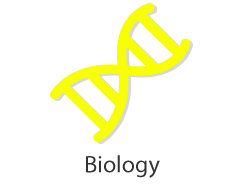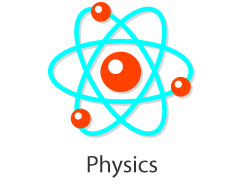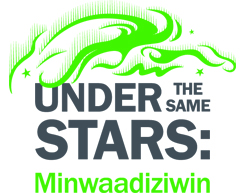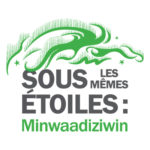USED ONE OF OUR LESSON PLANS?
Fill in our survey for a chance to win a Science North YETI mug! We will draw winners quarterly throughout the school year.
Fill in our survey for a chance to win a Science North YETI mug! We will draw winners quarterly throughout the school year.

In this workshop, students will learn how to have effective conversations about climate change and put it into practice by developing arguments and debating climate change topics with each other.


In this activity, students will investigate composite materials. They will compare the relative strength of composite and non-composite materials to understand why composite materials are used in construction and manufacturing

This lesson introduces students to different types of data, ways to collect data, and identifying bias in data collection. It then gives them the opportunity to collect their own primary data using a coding tool created in Scratch.
In this four-part lesson, students will learn all about health equity, starting by walking through the “seeing over the fence” analogy to understand how equity is different from equality. They will then develop further context for this issue by examining vaccine inequity as a case study. In part 3, one of Science North’s Indigenous Interns interviews a nurse at the Wikwemikong Health Centre on the challenges of achieving health equity in Indigenous communities. In the final section, the Many Nations, One Voice for Wellness team at Telus Spark will take students through a workshop on Dr. Christopher Emdin’s “Science Genius” method with health equity as the theme. Students will learn how to put their thoughts, feelings and experiences about this complex issue into rap and song.
* Internet connection required
In this two-part lesson, students will learn how scientific research is conducted and why scientific integrity is important in determining what sources of information we can trust. They will understand what can happen when a lack of scientific integrity leads to misconduct and explore scientific integrity with a real-world example of how we develop and test new vaccines. They will learn about the importance of understanding history and increasing diversity is science as they explore the contributions of scientists from different communities and backgrounds. Students will also learn the different parts of a research study and the signs of trustworthy research. Each learning objective is followed up by an online game or hands-on activity to reinforce the concepts.
* Internet connection required

Students will code and remix a scratch algorithm to explore and understand the differences between pure substances and mixtures.
Students will click through an interactive choose your own adventure story to help them prepare for vaccination day and explore the questions they have about vaccines, like:
● What are vaccines?
● How do vaccines work?
● Why are vaccines important?
● How do I deal with vaccine-related anxiety?
* Internet connection required
** Right-click the SAVE TO DESKTOP button and select "Save As..." in order to download the experience to your device for offline use
In the Agents of the Immune System GooseChase experience, students will work independently or as part of a team to complete the missions, learn about the immune system and collect points. Students' submissions in the GooseChase app will remain hidden from other students who participate in the Agents of the Immune System experience.

In this lesson, students will code two Microbits, one that will display temperature and another that will read the temperature and send it via radio to the first Microbit. Using these tools, they will conduct an experiment to create an insulated Microbit that experiences as little heat loss as possible.

This lesson has students creating algorithms to use as building plans to have other students create a bridge using as little material as possible that can support a load.

Students will learn the signs and symptoms of a concussion. This activity will encourage further discussion about concussions with friends and family. Adapted from Scrambled Brains Activity by Parachute.ca

Students will make a circuit with playdough, and use it as a metaphor for how a concussion can affect our neurons and slow the transmission of nerve impulses. Adapted from Brainfacts.org – Squishy Neuron Activity

Students learn about hydraulics and pneumatics, and how they can be used to lift loads in our school program “Devising Devices”. In this post activity, students will battle each other with syringes and see who will win a thumb wrestle war.

Students will create algorithms, colour-coding Ozobot movement to create specific angles, bisector(s), structures (shell, frame, solid), and show an area of 25cm2; Students will combine these movements together rather than having them done independently. This lesson uses inquiry, along with a Knowledge Building circle to pull out Science and Math big ideas. Further integration of Language may also be applied. Prior experience with Ozobots, angles or structures is not necessary; prior learning through Knowledge Building is helpful. The purpose is to provide materials along with minimal guidelines, allowing students to build their own knowledge. The materials include Ozobots and corresponding markers. Explicit guidelines should include: to uncover the next Big Ideas they are focusing on, along with scientific and mathematical terminology will help to drive their thinking (e.g., reflex, 65°, bisect, shell, solid, frame, 25cm2). If necessary, provide students with pre-drawn handouts for ease of exploration. Students will explore in pairs; teacher should take notes as terminology gets used. Culminate the activity in a Knowledge Build circle to pull out the next area of focus (e.g., Structures, Angles, Area).

This lesson builds on the first exploration by using block-coding with the Ozobot. By providing the same list of guidelines, students will be able to explore movement using the OzoBlockly app. This can be transferred through any type of device (e.g., ChromeBooks, Mac, personal devices). Students will engage in a Knowledge Build at the end to consolidate shared learning from the past 2 lessons (e.g., provocation: what type of structure is an Ozobot? What are the benefits of Colour-Coding and Block Coding?). This will lead into discussion of their final task: build a structure which withstands an external force (wind, earthquake) and/or an internal force (tension, compression, shear, torsion). These forces will be replicated through a block-coded Cue robot. Examples may be: a bridge which the Cue must travel across (internal force – compression AND/OR external force – earthquake); a goalpost (internal force – tension AND/OR external force – wind).

This lesson builds on the first two explorations by using block-coding with a Cue bot (intermediate/senior grades). Provide the same list of guidelines as in other lessons, and allow students to explore movement using the appropriate app (must have access to a tablet/personal device/Chromebook). Students will engage in a Knowledge Build at the end to consolidate shared learning from the past 2 lessons (e.g., provocation: what type of structure is an Ozobot? What are the benefits of Colour-Coding and Block Coding?). This will lead into discussion of their final task: build a structure which withstands an external force (wind, earthquake) and/or an internal force (tension, compression, shear, torsion). These forces will be replicated through a block-coded Cue robot. Examples may be: a bridge which the Cue must travel across (internal force – compression AND/OR external force – earthquake); a goalpost (internal force – tension AND/OR external force – wind).

This lesson uses prior knowledge about the factors and considerations necessary when designing and building a structure. Prior experience with Scratch for block coding is helpful, however not necessary. Two handouts are provided to give some background information to the teacher (e.g. building an account, attaching a classroom, and learning how to use the Codeblock feature in Tinkercad). Students will explore Tinkercad and consolidate their understanding by using Codeblock to design and build a simple structure which performs a function (e.g. chair), and uploaded as a .gif to share with one another. A chair has been suggested as a structure, however adapting the structure to what is most familiar and simple for students would assist in the design and build. Depending on their understanding, math curricular focus can be integrated; or future tasks could add math on as comfort level with Tinkercad increases.

This lesson is a continuation from their exploration, and adds design and ideas of a structure that is useful to them. Students will use code to create a structure which has a purpose specific to individuals, society or the economy (e.g., must withstand a load, or force). It can be something which already exists, however must be altered in a way to maximize performance. The end result is a share .gif to explain their structure. Further extensions are suggested.
In this lesson, students will play a game which demonstrates the balance of an ecosystem and how the changes in an ecosystem will affect all of its components. By introducing different scenarios in the game, students will also have the opportunity to learn about predator and prey relationships, native and non-native species and evasive species.

In this lesson, students will play a game which demonstrates the balance of an ecosystem and how the changes in an ecosystem will affect all of its components. By introducing different scenarios in the game, students will also have the opportunity to learn about predator and prey relationships, native and non-native species and evasive species.

This is the second lesson in a five-lesson unit on ecosystems. The whole unit is based on the concept of playing a board game to learn about the interactions that occur in an ecosystem. Each day the rules of the game change as the focus is on a different aspect. On this second day, the focus will be on the food web.

This is the third lesson in a five lesson unit on ecosystems. The whole unit is based on the concept of playing a board game to learn about the interactions that occur in an ecosystem. Each day the rules of the game change as the focus is on a different aspect. On this third day the focus is on invasive species.

This is the fourth lesson in a five lesson unit on ecosystems. The whole unit is based on the concept of playing a board game to learn about the interactions that occur in an ecosystem. Each day the rules of the game change as the focus is on a different aspect. On this fourth day the focus is on the impact of human activities.

This is the fifth lesson in a five lesson unit on ecosystems. The whole unit is based on the concept of playing a board game to learn about the interactions that occur in an ecosystem. Each day the rules of the game change as the focus is on a different aspect. On the fifth day the focus is on survival in a modified ecosystem.

This is the first lesson in a five lesson unit on heat. The framework for the unit is to look at the heat transfer from solar energy on Earth. This lesson focuses on what heat is.

This is the second lesson in a five lesson unit on heat. The framework for the unit is to look at the heat transfer from solar energy on Earth. In this lesson we will look at the effect of heat on gas.

This is the third lesson in a five lesson unit on heat. The framework for the unit is to look at the heat transfer from solar energy on Earth. In this lesson we focus on the effects of heat on water.

This is the fourth lesson in a five lesson unit on heat. The framework for the unit is to look at the heat transfer from solar energy on Earth. In this lesson we look at insulation and one of the consequences of “insulation” in our atmosphere – the greenhouse effect.

This is the fourth lesson in a five lesson unit on heat. The framework for the unit is to look at the heat transfer from solar energy on Earth. In this lesson we look at insulation and one of the consequences of “insulation” in our atmosphere – the greenhouse effect.


In this activity, students will make tea and learn about tannins. Students will make a poster outlining the important function of tannins.

Recycling plants are an industrial example for which separation of mechanical mixtures occur every day. They must find ways to separate tonnes of incoming material ranging from paper to steel, so that it can be re-used in an effective and cost effective way. In this lesson, students create a device or tool to sort recycling at their school, reducing the strain on their municipal recycling facility.

In Part A of the lesson, students investigate the properties of solutes and solvents by testing solubility of sugar in water at different temperatures. In Part B, students use the properties of a super saturated solution to create rock candy.

In this lesson, students experiment with different substances to see how they interact with each other. They will use a table to create a hypothesis for each mixture and then conduct the experiment and compare their results. Students can create their own experiment to extend their learning.